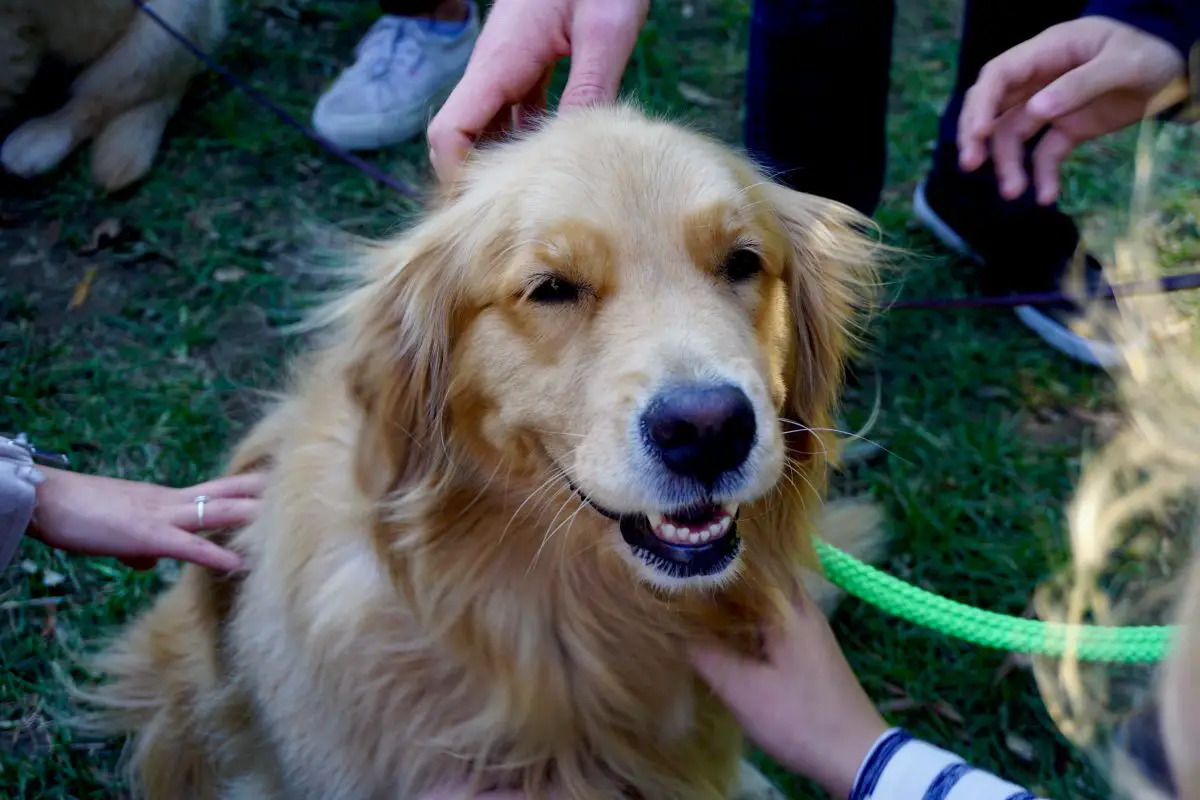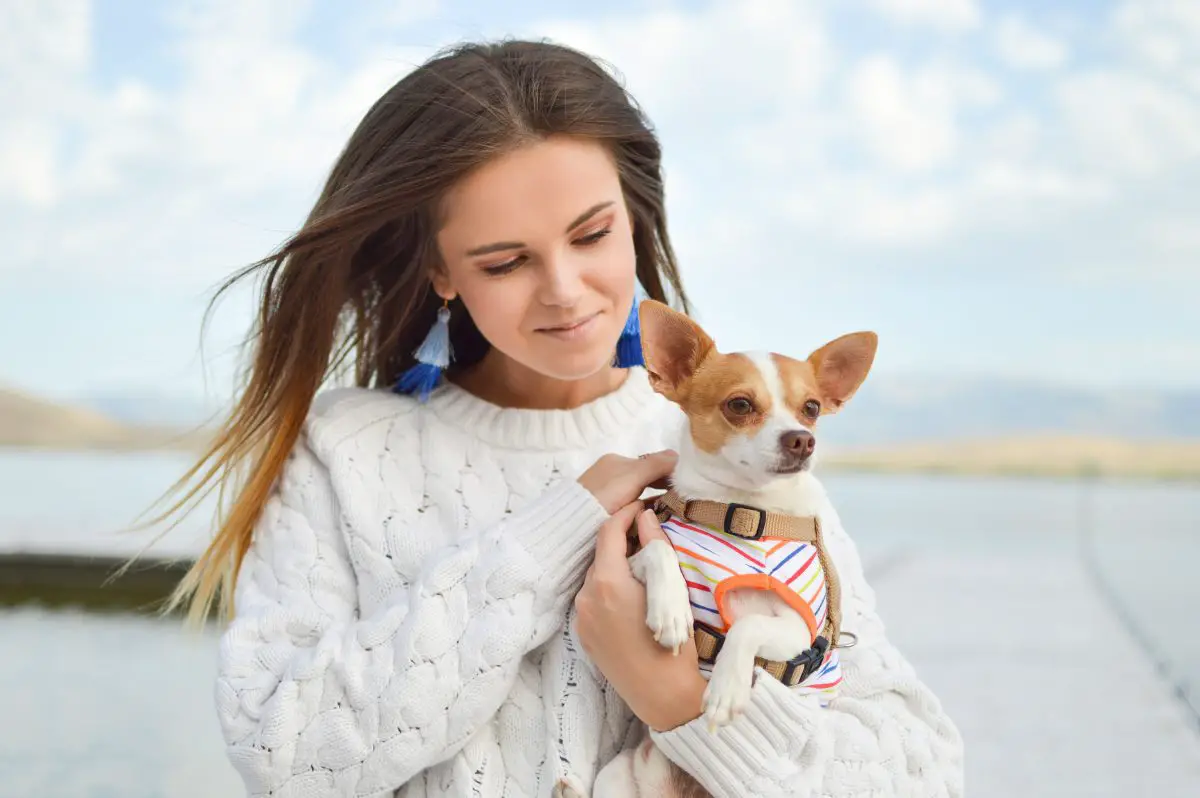You’re probably thinking, “There’s no right or wrong way to go about patting the dog. I’ve been petting dogs my whole life!” Well, yes, maybe you have been sharing the love with every canine that crosses your path, so you have experience. And yes, dogs are far less picky than cats when it comes to being pet the right way. However, there are some instances where patting the dog can cause them stress or anxiety—which could lead to a trip to the vet.
Since you want to make sure your furry friend is happy and relaxed, learning the right way to pet a dog is important.

Everything You Need to Know About Patting a Dog
There are many ways to go about patting the dog, but if you want the best experience for you both, you have to follow some rules. The first rule when petting a dog is only initiating contact if they come to you first. Far too often, humans take liberties with animals, not realizing that sometimes a touch is unwelcome and stressful. Since you want your dog to trust you, you need to show them that you can be patient and, yes, trustworthy.
Dogs also have individual likes and dislikes. Some dogs prefer a good chin scratch, while others might like a nice pat at the base of the tail. When initiating a petting session with any dog, look for context clues for what they like best. Few places on a dog are off limits right away, though the safest spots are always on the head, under the chin, the chest, and back.
Keep in mind that if docile dogs become snappish when you pet them, it could be a sign of injury or illness. Take the dog to the veterinarian immediately for diagnosis. Some ailments that cause sensitivity to touch include ear infections, nail discomfort, and arthritic pain in the hips and back.
Do Dogs Like To Be Petted?
Yes, dogs like to be pet—as long as it’s done the right way.
Touch is something that all creatures crave, because it’s such a special way to show you care. Touch also releases oxytocin, the bonding hormone.
For both humans and dogs, touch soothes anxiety, lowers heart rate and blood pressure, and promotes a feeling of comfort. However, you need to know how to approach a dog correctly and pet them so they don’t feel threatened.
Have You Been Petting Your Dog Wrong Your Whole Life?
So now that you know that trust must be established prior to petting a dog, you might have inkling that you’ve been going about patting the dog wrong this whole time. Any dog you approach, be it a dog you’ve seen dozens of times or a stray out in the forest, you have to avoid looking threatening. You shouldn’t make the first move, and you need to be cautious.
Proper greetings are a must, as is using pets the right way.
Petting, interestingly, can be used in lieu of verbal affirmations when training your dog. That’s how important touch is to dogs. In fact, studies have found that dogs even prefer pets over “good boy” and consider it a reward for good behavior. For example, if your dog remains at your side when guests arrive instead of jumping around, give them a pet to show them that they’re behaving well.
This isn’t going to work in more stimulating environments, though. If you’re at the dog park, a pet isn’t going to be enough to keep your dog by your side. It will, however, keep them calm enough to listen to your commands.
Employ these same tactics when petting new dogs, too.
Petting an Unknown or Stray Dog
So you’ve come across a dog you don’t know. The first rule is to never reach out to pet them. Reinforce this rule in your children, as well. They should never approach a dog who is clearly uncomfortable and trying to hide or run away.
Rather than reaching out where a dog could lunge and bite, give the dog a chance to come to you instead. Invite first contact by crouching or squatting down at their level and slightly turn your body to the side so your chest isn’t facing them. With scared or timid dogs, this is a display that shows you aren’t trying to be intimidating. If a dog seems far more confident, you don’t have to squat down. Simply bend over, pat your thighs, and talk to them soothingly.
Don’t hover over or around dogs. Make minimal eye contact, as that can be perceived as a threat.
If the dog allows you to pet them, avoid going any further than under the chin. Never touch the top of a fearful dog’s head, as this could be seen as aggression from a bigger animal. Dogs often keep their nose and eyes to the ground, so anything touching the top of their head is threatening.
Petting a Friendly Dog
Is the dog approaching with its tail wagging and eyes wide? Do you know this dog is friendly? It’s still smart to let the dog initiate contact. Keep in mind that dogs live by their sense of smell and will want to smell your hand first. Curl your hand slightly, so your fingers are protected by the palm, just in case the dog becomes aggressive.
Again, only start by petting the dog under the chin. As mentioned above, patting the dog’s head may be perceived as aggression; even friendly, docile dogs might snap. Only proceed to pet the dog’s head when they are completely comfortable with you.
Also, don’t be in a rush to pet a friendly dog who exposes his belly. While there are occasions where this means the dog wants belly pets, it can also mean the dog is intimidated. You don’t want to come off as too pushy or threatening.
Only proceed to pet the dog beyond the chin and head when you’re on good terms.

Where to Pet a Dog?
The best spots for petting a dog include:
- Under the chin: This is the safest spot when meeting new dogs
- Sides of the head
- Neck
- Chest: Dogs love being scratched and rubbed here
- Down the back
- Shoulders
And only when you know you’re trusted:
- Slow strokes on the top of the head
- Gentle pats near the base of the tail
- Belly rubs
And if you pet these places with a careful, gentle touch? Your furry companion is going to love every minute.
Patting the Dog – More to Learn
Patting the dog seems like an easy task, but there’s much more to it. Let the dog come to you then be gentle. Getting too excited could be stressful to the dog. Keep your pets to the chin, head, chest, and back until the dog trusts you. If this is your first meeting, avoid the base of the tail or other sensitive regions, like the paws.
Now, you’re a dog petting pro.
Read more related posts on the blog about your canine pal:
FAQs
Yes, patting or petting your dog can be a positive and enjoyable experience for both you and your furry friend. Dogs often seek and appreciate physical affection from their human companions, and petting can have several benefits.




